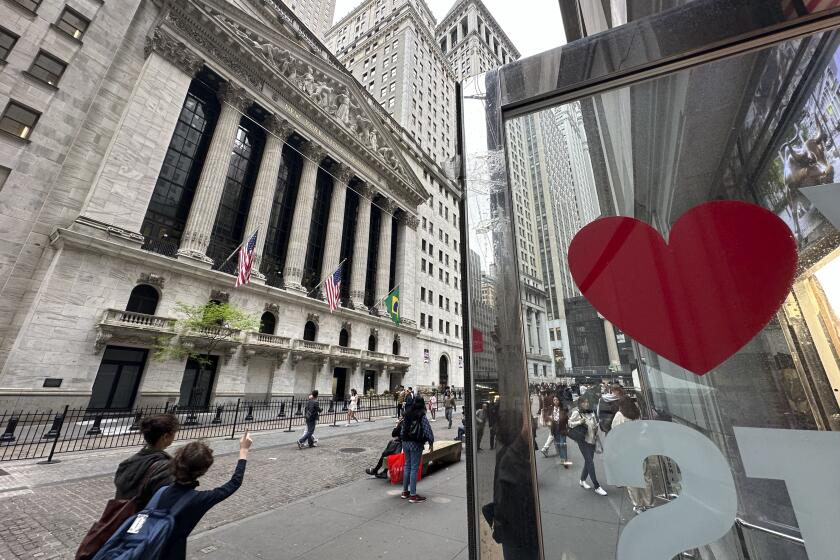Firm Pioneered Portfolio Insurance : Leland O’Brien Designing New Hedging Technique
After being blamed for contributing to the October stock market crash and watching its business drop, the Los Angeles company that pioneered portfolio insurance is designing a new trading technique to try to protect investors against market declines.
Hayne E. Leland, a founder of Leland O’Brien Rubinstein Associates, said the new product will be ready to market within two months. He declined to discuss the plan, saying only that it would not involve the kinds of trading employed by current portfolio insurance techniques.
Those trading techniques, which emphasize selling futures contracts in response to a declining stock market, have become controversial since the crash. The controversy heated up on Jan. 8 when a presidential commission said portfolio insurance played a direct role in the market collapse.
Portfolio Insurance Prevalent
In the five days surrounding the Oct. 19 crash, managers of large institutional funds using the technique sold huge amounts of futures, which helped pull down the stock market, according to the Brady Commission’s report, named after Commission Chairman Nicholas F. Brady.
The report said firms using portfolio insurance influenced 20% of the massive selling in the five-day period surrounding Oct. 19.
The report did not identify the firms, but Leland O’Brien Rubinstein and the investment unit of San Francisco-based Wells Fargo & Co. have been mentioned in news accounts as big portfolio insurers, along with Bankers Trust New York Corp. and Aetna Life & Casualty.
Published accounts have said the Wells Fargo unit sold $2.9 billion worth of stocks and futures on Oct. 19 on behalf of pension funds and other large clients. The unit president, Frederick L.A. Grauer, said client confidentiality did not allow him to confirm the numbers.
He agreed that Wells Fargo was a big seller but he said portfolio insurers have received an unfair portion of blame for the crash.
“Other participants on the sell side represented 80% of the volume,” said Grauer. “I’m not suggesting for a moment that we were not part of the fabric, but the fabric is made up of more than a few threads and those other threads have not been spotlighted.”
The confidential trading data supplied by Wells Fargo to the Brady Commission was leaked to some newspapers, and Grauer said Wells was singled out while big sellers among the other 80% remained anonymous.
“They were just as purposeful sellers as we were,” said Grauer.
Wells Fargo had $9 billion covered by portfolio insurance before the crash and Grauer said the amount has dropped to about $3 billion. While he said the reduction is chiefly a function of the increased cost of the technique in a volatile market, Grauer acknowledged that questions have been raised about the “social acceptability” of portfolio insurance.
Leland O’Brien Rubinstein managed $5 billion before the crash and Leland would not say how much the figure has gone down. But he said, “The Wells Fargo experience was not atypical.”
Leland said his firm was not a major seller on Oct. 19. He said it sold only about $250 million worth of futures contracts, about one-third of the amount necessary to implement the strategy for minimizing losses.
Volume Caused Black Monday
Many portfolio insurers experienced difficulty executing enough trades during the crush of selling that buried the markets. The difficulty meant that, in many cases, the technique was not as effective as had been promised to investors.
Leland, a finance professor at the University of California, Berkeley, said the possibility that portfolio insurance would be hard to implement again if Oct. 19 were repeated was one motivation for creating the new hedging product.
He bristled at the idea that portfolio insurers were to blame for the crash, saying that the collapse was the result of the inability of the markets to handle the billions of dollars in trades generated Oct. 19.
“What the (Brady) report really shows is that the market-making mechanisms have to be able to absorb the kinds of volumes manifested on that day,” said Leland.






